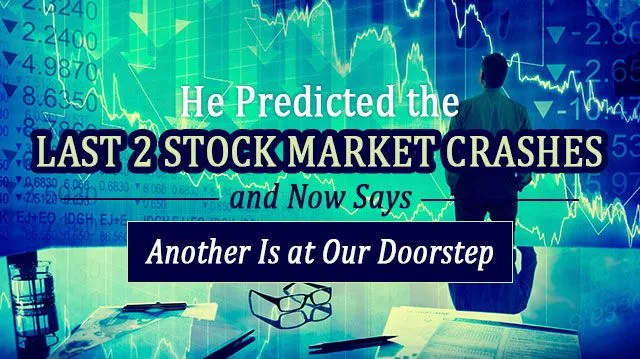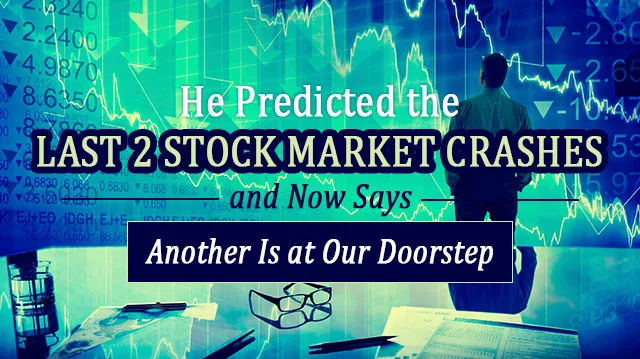
- Share on Facebook51
- Share on Pinterest
- Share on Twitter
It’s a natural human tendency to adopt an out-of-sight, out-of-mind mentality about certain things. During times of economic prosperity, when jobless rates are down, and people are investing in large-scale purchases again, it’s easy to forget that just a few short years ago, many of us had a hard time finding work, buying homes or even providing for our families. But one of the most reliable voices in the country is warning about another. Should we listen?
John P. Hussman, Ph.D., a former professor of economics and international finance at the University of Michigan posts weekly analyses of the market on his site, Hussman Funds. In July of this year, Dr. Hussman warned that a specific combination of troubling signals coming from the market was occurring once again. What makes this combination the harbinger of bad news is that since 1970, Dr. Hussman has observed the same conditions — in 1972, 2000 and 2007 — all before a significant crash in the stock market.
According to Newsmax, the four conditions that foreshadowed the crashes mentioned above are as follows:
- Less than 27 percent of investment advisers polled by Investors Intelligence who say they are bearish.
- Valuations measured by the Shiller price-to-earnings ratio are greater than 18 times.
- Less than 60 percent of S&P 500 stocks are above their 200-day moving averages.
- Record high on weekly closing basis.
Now, if you feel like you need a magic decoder ring to figure out what the heck all of that means, you’re not the only one. Let us break it down for you.
Bullish vs. bearish stocks
Anyone who loved Saturday Night Live in the 1990s remembers “Bill Swerski’s Super Fans” and their iconic toast of frosty beers to, “Da Bulls!” and “Da Bears!” but we assure you this isn’t the same thing at all. Investors talk about stock prices in terms of their increase or decrease over time. If they’re “bullish,” then investors believe that the stock’s price will rise. On the flip side, a “bearish” stock is one that investors believe will decrease in price. So, if less than 27 percent of investment advisors are feeling bearish, that means a lot of advisors are advocating stock sales.
Shiller price-to-earnings ratio
Often referred to as the Shiller P/E Ratio, this method of measurement was invented by Yale professor Robert Shiller. It measures the valuation of equity and usually looks at 10-year periods to track change over time. As Dr. Hussman states on his website, “Valuations control long-term returns. The higher the price you pay today for each dollar you expect to receive in the future, the lower the long-term return you should expect from your investment.” Elevated ratios mean long-term disappointment, according to Dr. Hussman.
200-day moving average
The 200-day moving average gives investors an idea of the long-term return of stocks. According to Larry Connors, author of the book, Short Term Trading Strategies that Work: A Quantified Guide to Trading Stocks and ETFs, “It’s better to be buying stocks in a longer term uptrend than in a longer term down trend,” and the 200-day moving average can show how much stocks are likely to be worth after 200 days. If less than 60 percent of S&P 500 stocks are above their 200-day average — companies that include 3M Company, American Express, Coca-Cola, Time Warner Inc. and many more — then an alarming amount of stock in major companies might be worth less in the long term.
 Although we haven’t seen a crash yet, Dr. Hussman cautions, “This is no time to be on autopilot.” His latest Weekly Market Comment, written on December 7, 2015, is titled “From Risk to Guarded Expectation of Recession.” In it, he advises a passive stance on investments as just last week, the experts in the market are guarded, watching for a recession. “I use the word ‘guarded’ because we should acknowledge that this time may be different, particularly in the event that broad market internals improve substantially,” but a recession is still likely.
Although we haven’t seen a crash yet, Dr. Hussman cautions, “This is no time to be on autopilot.” His latest Weekly Market Comment, written on December 7, 2015, is titled “From Risk to Guarded Expectation of Recession.” In it, he advises a passive stance on investments as just last week, the experts in the market are guarded, watching for a recession. “I use the word ‘guarded’ because we should acknowledge that this time may be different, particularly in the event that broad market internals improve substantially,” but a recession is still likely.
Dr. Hussman concedes that he incorrectly anticipated a recession in 2011 and 2012, but if he’s nervous when looking at the current trends, perhaps we should be too.
Do you invest in the stock market? We’d love to hear your thoughts on the matter.
–Megan Winkler
Megan Winkler is an author, historian, Neurosculpting® meditation coach, certified nutritional consultant and DIY diva. When she’s not writing or teaching a class, Megan can be found in the water, on a yoga mat, learning a new instrument or singing karaoke. Her passion for a healthy mind-body-spirit relationship motivates her to explore all the natural world has to offer.
Sources:
http://etfdailynews.com/2015/07/28/why-the-next-great-stock-market-crash-in-the-u-s-is-coming
http://www.newsmax.com/Finance/RobWilliams/Hussman-stocks-market-investing/2015/07/27/id/659126
http://www.hussmanfunds.com/wmc/wmc150727.htm
http://data.bls.gov/timeseries/LNS14000000
http://www.investopedia.com/study-guide/series-4/introduction/bullish-vs-bearish
http://www.investopedia.com/terms/p/pe10ratio.asp
http://www.tradingmarkets.com/glossary/moving_average_-_200-day
http://www.hussmanfunds.com/wmc/wmc151207.htm
- Share on Facebook51
- Share on Pinterest
- Share on Twitter

